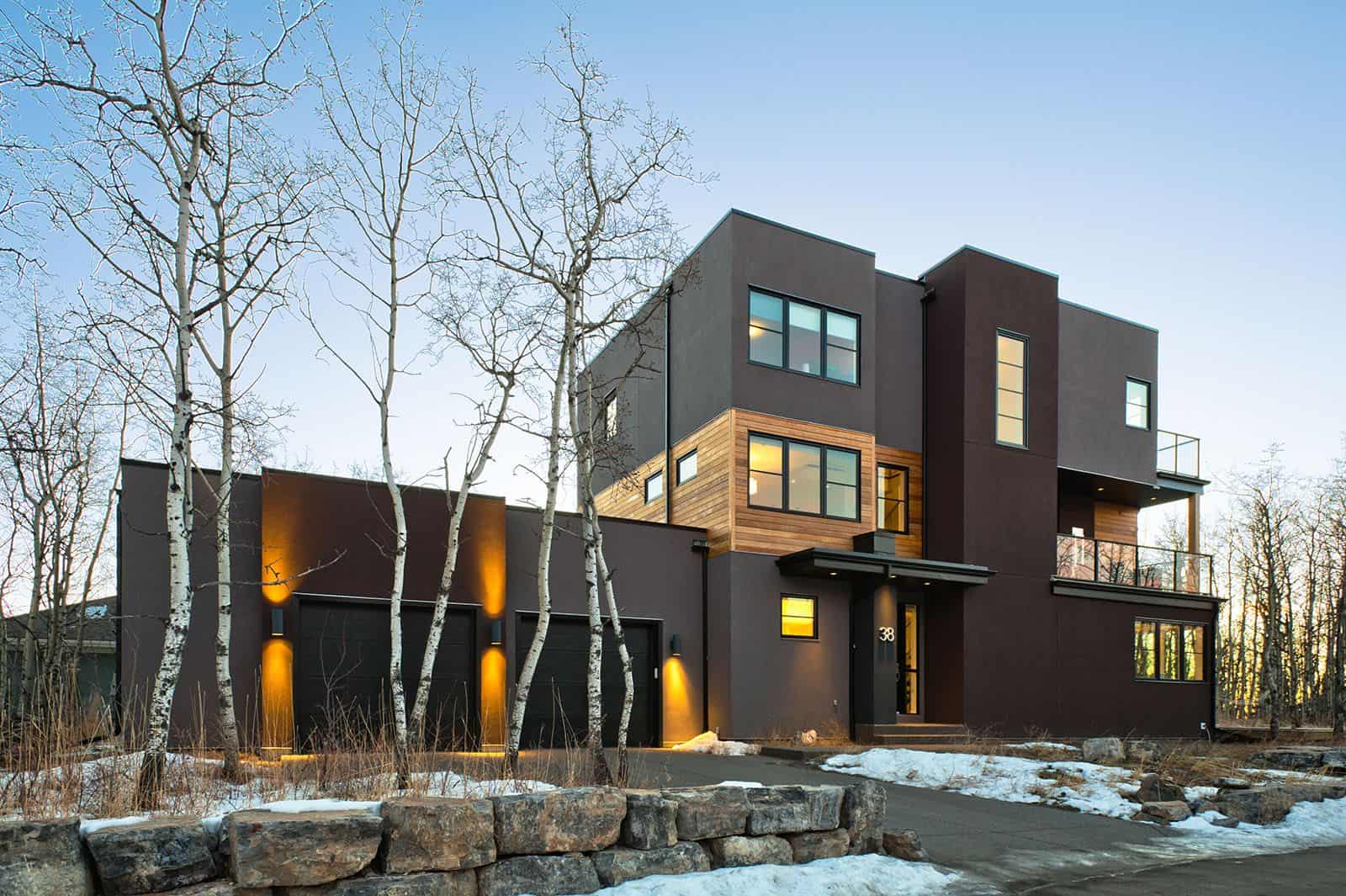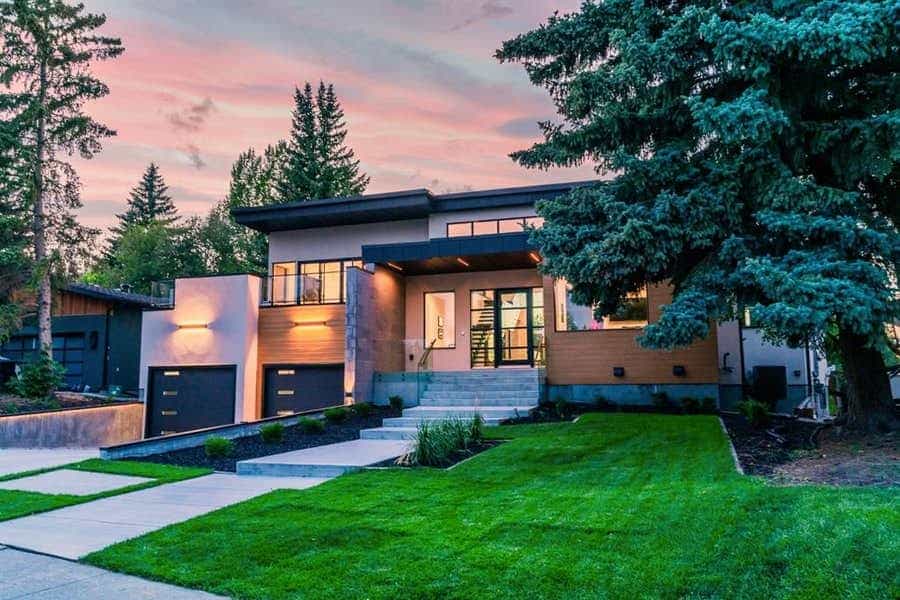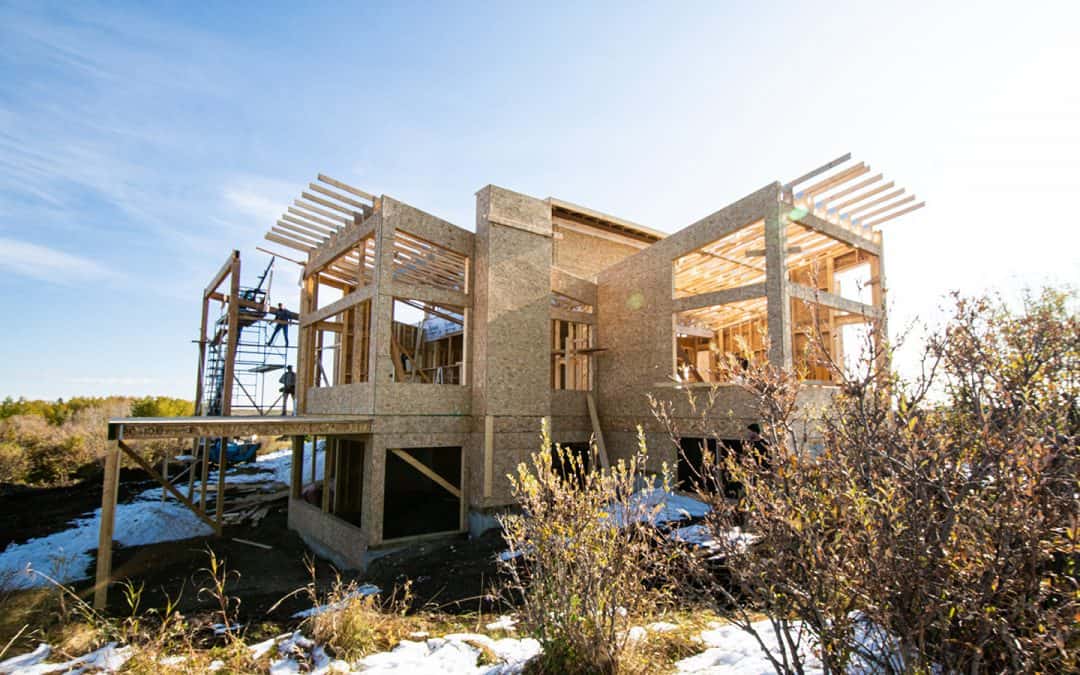Building a home to meet the needs of any locale is challenging, but it’s even more so in Calgary and the surrounding areas. With temperatures that swing from the biting cold of winter to the searing heat of summer, this unique climate presents a fascinating challenge for homeowners and custom home builders in Calgary alike.
Custom home design in Calgary and the surrounding areas requires a deep understanding of the environment, and taking a creative approach to living spaces is necessary for success. In the coming sections, we’ll explore the key challenges faced by locals and how to overcome them with innovative design ideas.
Building a Custom Home in Calgary Means Embracing the Extremes
We see a wide range of weather conditions city-wide. Calgary and the surrounding areas sit at the junction of humid continental and semi-arid climates. While winters are cold and snowy, summers are hot and dry—and then there’s the presence of chinooks. These warm wind phenomena add a layer of complexity by causing rapid temperature increases during colder months.
What does this all mean for custom home design? Flexibility is key. A flexible home design approach means your house can adapt to extreme temperature fluctuations, dry conditions, and more.
Key Challenges For Custom Home Design in Calgary & Surrounding Areas
Understanding key challenges in Calgary home design is crucial for creating comfortable, durable, and energy-efficient living spaces. Some important factors to consider include:
- Variable Weather Conditions: With our wide range of temperatures that vary throughout the year, adequate insulation and a reliable HVAC system are required to stay comfortable.
- Energy Efficiency: Calgary and the surrounding areas have high heating demands, making energy efficiency difficult, but not impossible. Maximizing sun exposure while minimizing overheating in the summer calls for the strategic planning of solar power systems and passive solar design.
- Water Management: Calgary’s semi-arid climate poses challenges for water conservation and landscaping.
- Building Materials & Construction: Extreme temperatures take a toll on building materials. Choosing materials that can withstand Calgary’s climate, from freezing temperatures to summer heat and potential hail, is essential. In addition, Calgary’s shorter construction season, because of our long winters, can lead to delays.
- Environmental & Local Regulations: Building codes and environmental regulations are frequently updated. Adhering to these can improve energy efficiency and reduce environmental impact, but this requires thorough knowledge and planning.
- Adapting to Future Climate Change: The climate in Calgary and the nearby areas is changing. With the ongoing impact of these changes, designing homes that can adapt to future environmental shifts is important.
Addressing these challenges in custom home design requires a balanced approach. It’s important to consider the demands of Calgary’s climate and the goals of sustainability, comfort, and aesthetic appeal.
Consulting with custom home builders in Calgary who understand these challenges can have serious payoffs. Our experienced team can ensure your home is not only beautiful but also resilient and comfortable all year long.

Building Your Custom Home in Calgary & Surrounding Areas: What to Consider
There’s a lot to consider when creating your dream home. From finding the right builder and interior designer in Calgary to local regulations and accessibility, it can seem like a never-ending list—and that doesn’t even include what’s needed to design for the city’s unique climate.
Hiring a custom home designer and interior design company can bring peace of mind knowing that everything that needs to be considered and completed, is. But that doesn’t mean you shouldn’t be prepared or know what you want. Be sure to consider the following opportunities before you consult with a custom home designer in Calgary.
Thermal Efficiency
Effective insulation is the cornerstone of any climate-responsive home, and in Calgary, it’s no different. High-quality insulation keeps the warmth in during the winter and out during the summer.
Incorporating materials with high thermal mass, such as concrete or stone, can also be a smart idea. These materials can help regulate indoor temperatures and decrease utility bills by absorbing heat during the day and releasing it at night.
Smart Windows & Natural Light
The strategic placement of windows allows you to take advantage of natural light while minimizing heat loss and gain. Large, south-facing windows can provide passive solar heating, a boon during Calgary’s cold spells.
Installing triple-glazed windows with low-emission coatings can further reduce your energy consumption by helping to retain indoor heat. These innovative windows also reflect solar heat in the summer, helping your air HVAC system become more efficient.
Ventilation & Air Quality
A well-designed ventilation system is essential for maintaining air quality and moisture levels, particularly in the area’s dry climate. Heat recovery ventilators (HRVs) can exchange the inside air with fresh outdoor air, reclaiming energy from the outgoing stream. This helpful system ensures constant fresh air without significant heat loss, crucial for both winter and summer comfort.
And don’t forget to ask your custom builder about cross ventilation. Cross ventilation can cool your home naturally in the summer by creating a breeze flow, reducing the need for air conditioning.
Outdoor Living Spaces
Local residents enjoy a unique outdoor lifestyle, thanks to its beautiful landscapes and sunny days. Versatile home design extends to outdoor living spaces, with features like covered patios, outdoor fireplaces, and strategic landscaping. These elements allow homeowners to enjoy the outdoors, regardless of the season, and can provide natural windbreaks or shade.
Incorporate Durable Materials
Choose materials that can withstand Calgary’s weather extremes, from heavy snow to intense sun. Options like fiber cement siding, stone, and metal roofing are durable and require minimal maintenance.
Passive Solar Design
Designing your home with a southern-facing orientation can take advantage of natural light. It can also encourage passive solar heating during the colder months. Consider using overhangs to shade windows in the summer while allowing winter sunlight to warm the house.
Thermal Zoning is also an important factor to consider. With it, you can achieve greater comfort and energy efficiency by arranging your home’s layout. This could mean placing living areas where they receive sunlight during the day and bedrooms in quieter, cooler parts of the house.
Integrate Renewable Energy Solutions
Sustainability is a key consideration in adaptive home design. Renewable energy sources, such as solar panels, are increasingly viable in Calgary and nearby areas, thanks to its many sunny days. Rainwater harvesting and drought-resistant landscaping can also help you create an eco-friendly house while catering to the local climate.
You may also want to consider geothermal systems for heating and cooling. These systems leverage the earth’s constant temperature below the frost line to heat and cool your home efficiently.

Build Your Dream Home with Calgary’s Climate in Mind
Start planning your dream home now to ensure it’s equipped to thrive in the diverse weather conditions in Calgary and the surrounding areas. Book a consultation with Ellergodt Design today to begin your journey toward creating a living space that uses the local climate to your advantage!
FAQ
What is a custom home?
Custom homes are designed specifically for a client and location. They allow clients to control the layout, lot size, and accessibility, along with a wide range of other features. At Ellergodt Design, we specialize in custom home design for the residents of Calgary and the surrounding area.
How long does it take to build a house in Calgary & surrounding areas?
Depending on the size of the house, it can take anywhere from 10-15 months to build from the ground up. The building time can also be affected by the expertise of the builders, so it pays to do your research before selecting a home builder.
Discover more inspiration for your home design journey:
How to Balance Functionality with Aesthetics in Home Design

